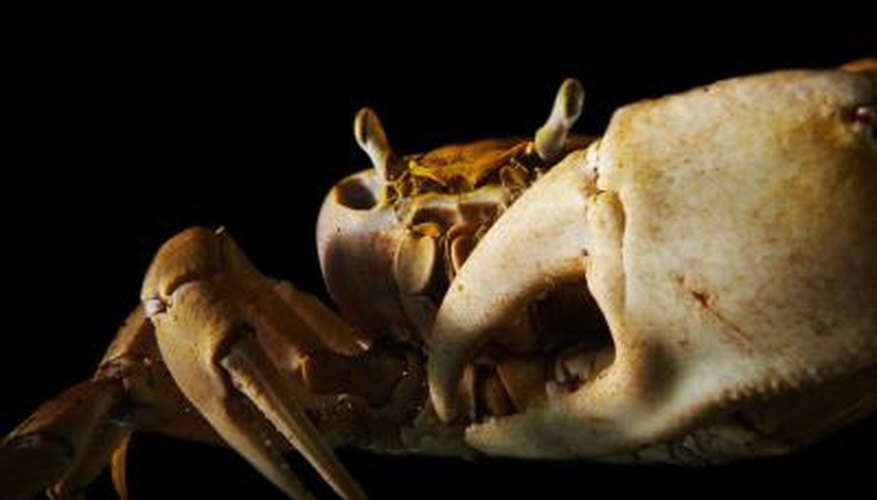Crab legs are a widely eaten seafood dish. Like all perishable foods, crab legs are susceptible to spoilage. You should always avoid eating spoiled food. Food poisoning is a common result of ingesting bad or undercooked crabmeat. There are some toxins that contaminate crabs and shellfish that can cause problems with your health regardless of how fresh the seafood is.
Staphylococcus
Staphylococcus is a common type of food poisoning caused by bacteria that thrive in spoiled meats and other foods that have gone bad. If you eat spoiled crabs legs that host this bacteria, you will experience symptoms either immediately or within a few hours. The usual symptoms of this type of food poisoning include nausea, vomiting, diarrhoea, weakness and abdominal pain. Symptoms usually go away within a few hours. Medication is not necessary in most cases, but water and liquids can help prevent dehydration from the fluids lost to vomiting and diarrhoea.
- Staphylococcus is a common type of food poisoning caused by bacteria that thrive in spoiled meats and other foods that have gone bad.
- If you eat spoiled crabs legs that host this bacteria, you will experience symptoms either immediately or within a few hours.
Vibrio Parahaemocyticus
Vibrio parahaemocyticus is a bacterium that is found in crabs and other shellfish. Eating raw or undercooked crab legs that have spoiled puts you at risk for infection from this bacterium. Symptoms of this kind of infection include watery diarrhoea, stomach cramps, nausea, chills, fever and vomiting. These symptoms occur within 24 hours of ingestion. The illness usually lasts three days and then it recedes. People with weakened immune systems may experience a severe and prolonged illness. Antibiotics are only prescribed for serious cases of infection.
- Vibrio parahaemocyticus is a bacterium that is found in crabs and other shellfish.
- Symptoms of this kind of infection include watery diarrhoea, stomach cramps, nausea, chills, fever and vomiting.
Paralytic Shellfish Poisoning
Paralytic shellfish poisoning is caused by biotoxins produced by a sea plant called dinoflagellate. Shellfish eat these biotoxins and become infected. Crabs that eat other infected shellfish are then infected. Cooking infected shellfish or crabs does not destroy the toxin or make it safe to eat. It is impossible to tell without laboratory testing if seafood is infected. Therefore, you may become sick with paralytic shellfish poisoning even if your crab legs are not necessarily spoiled. Symptoms of this illness include nausea, a sense of floating and tingling sensations in the lips, tongue, fingers and toes. These sensations begin between a few minutes and a few hours after ingestion. You may also lose control of your limbs and have difficulty breathing. People with severe cases of paralytic shellfish poisoning become paralysed in their chest and abdomen. The muscles that control their breathing shut down and they ultimately suffocate within 30 minutes.
- Paralytic shellfish poisoning is caused by biotoxins produced by a sea plant called dinoflagellate.
- Cooking infected shellfish or crabs does not destroy the toxin or make it safe to eat.
Other Shellfish Poisonings
Sometimes toxins are ingested by shellfish that are preyed upon by crabs. These crabs take the toxins into their own systems and their meat becomes unsafe to eat. Symptoms of neurotoxic shellfish poisoning appear within three hours after eating bad crab legs. Symptoms include numbness, loss of coordination, upset stomach and tingling in the mouth and limbs. These illnesses are typically non-fatal and recede within three days. Amnesic shellfish poisoning is characterised by upset stomach, dizziness, disorientation, short-term memory loss and seizures. These symptoms appear within 24 hours of ingestion.
- Sometimes toxins are ingested by shellfish that are preyed upon by crabs.
- Amnesic shellfish poisoning is characterised by upset stomach, dizziness, disorientation, short-term memory loss and seizures.
